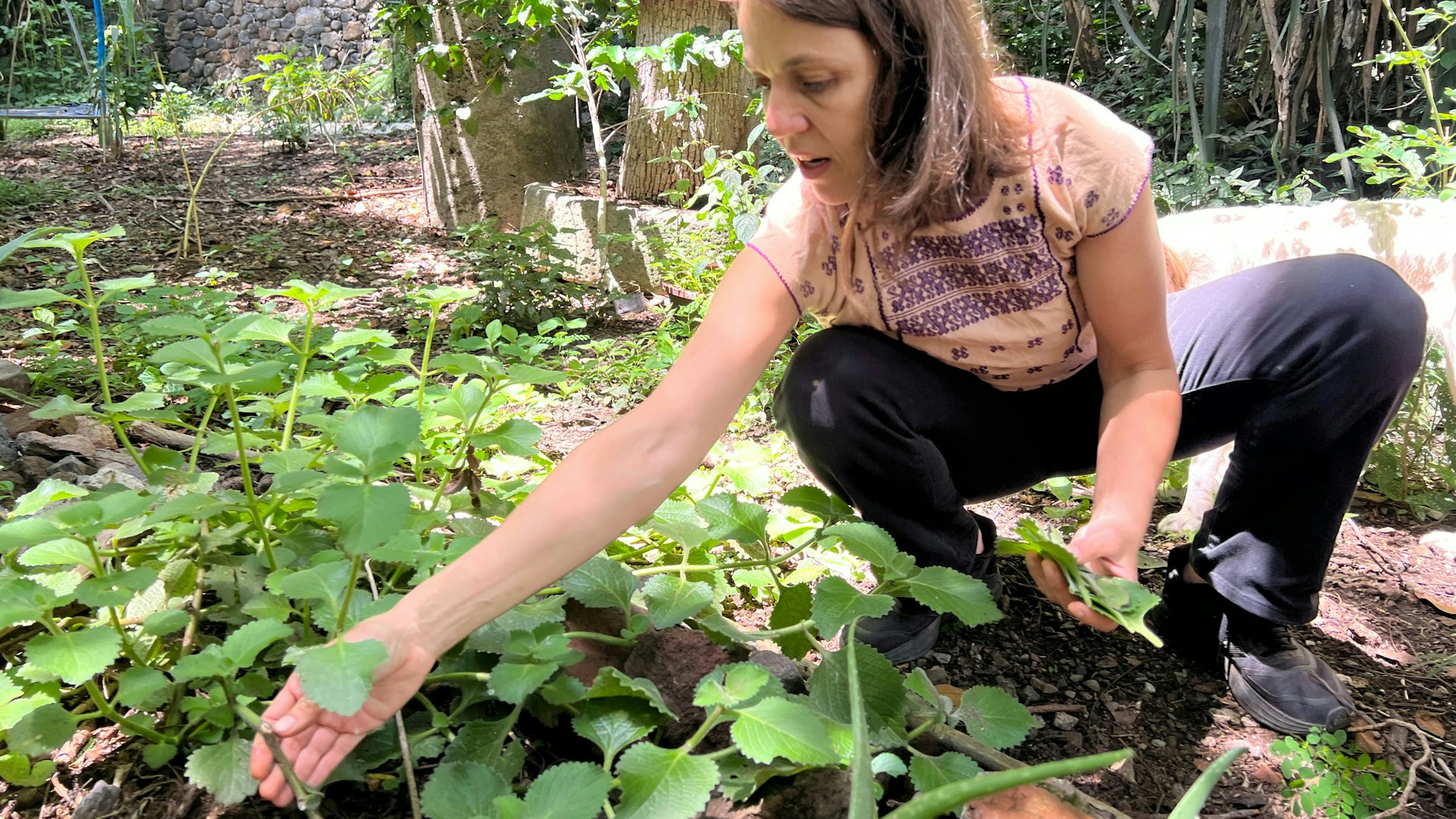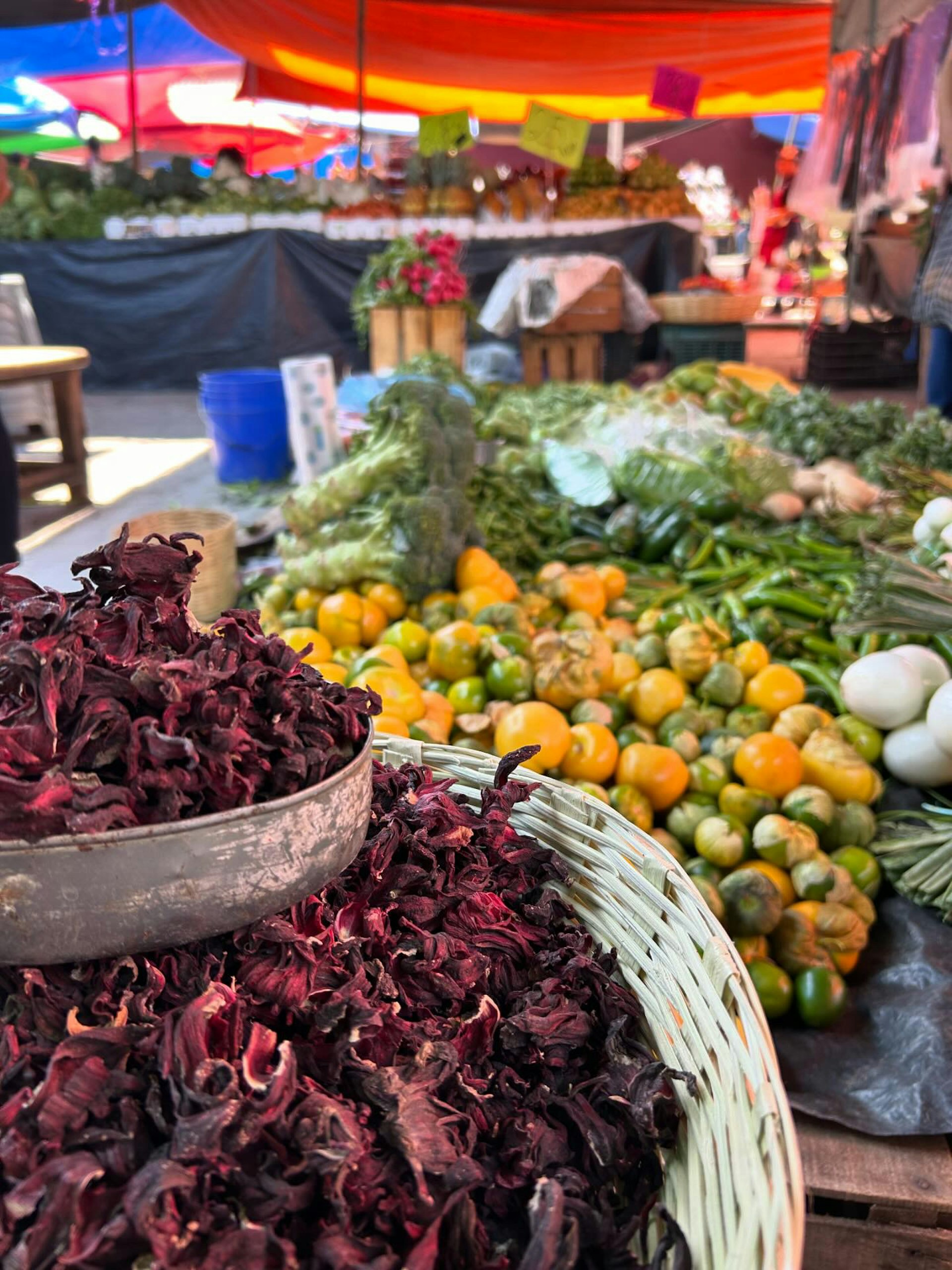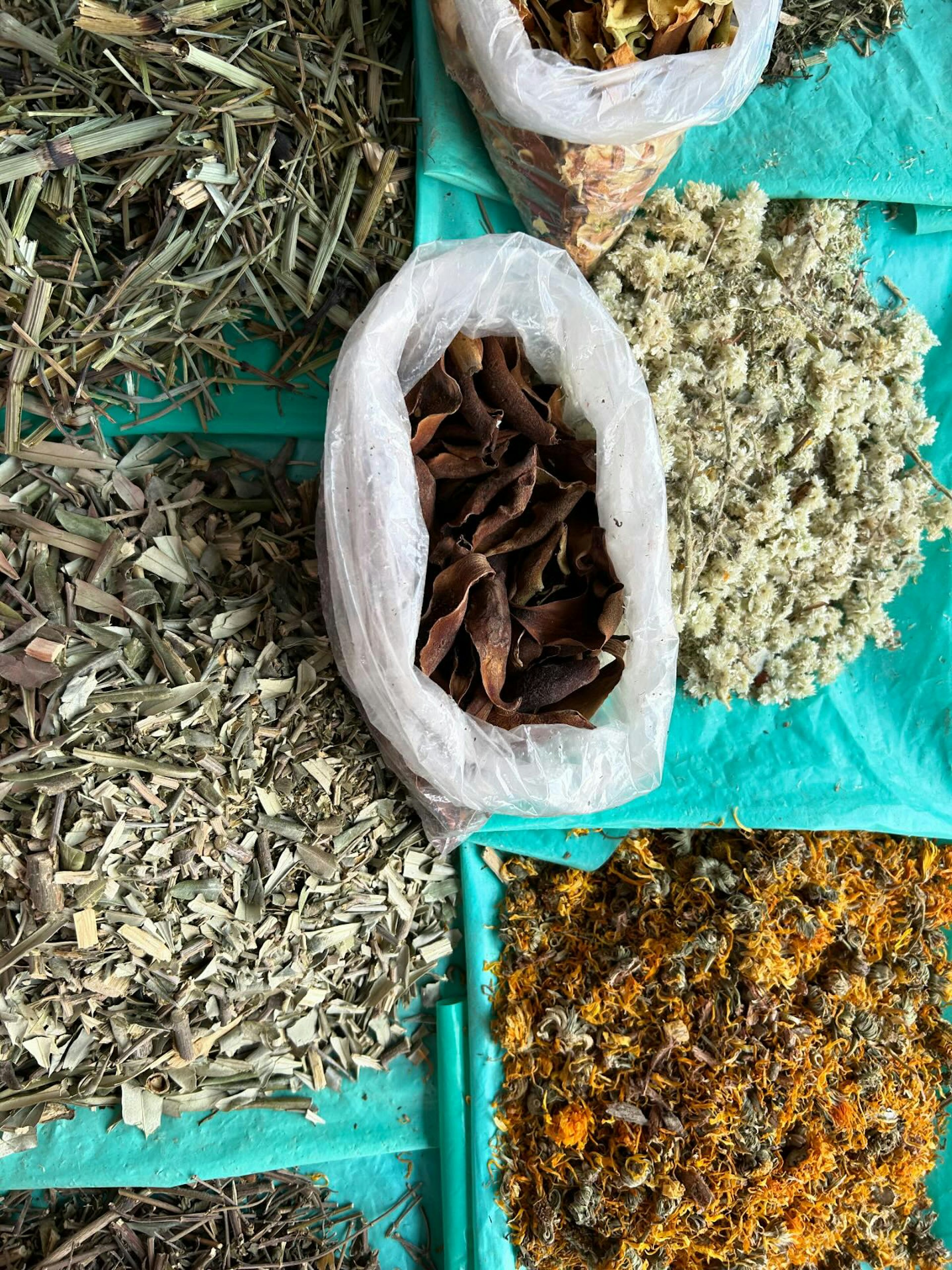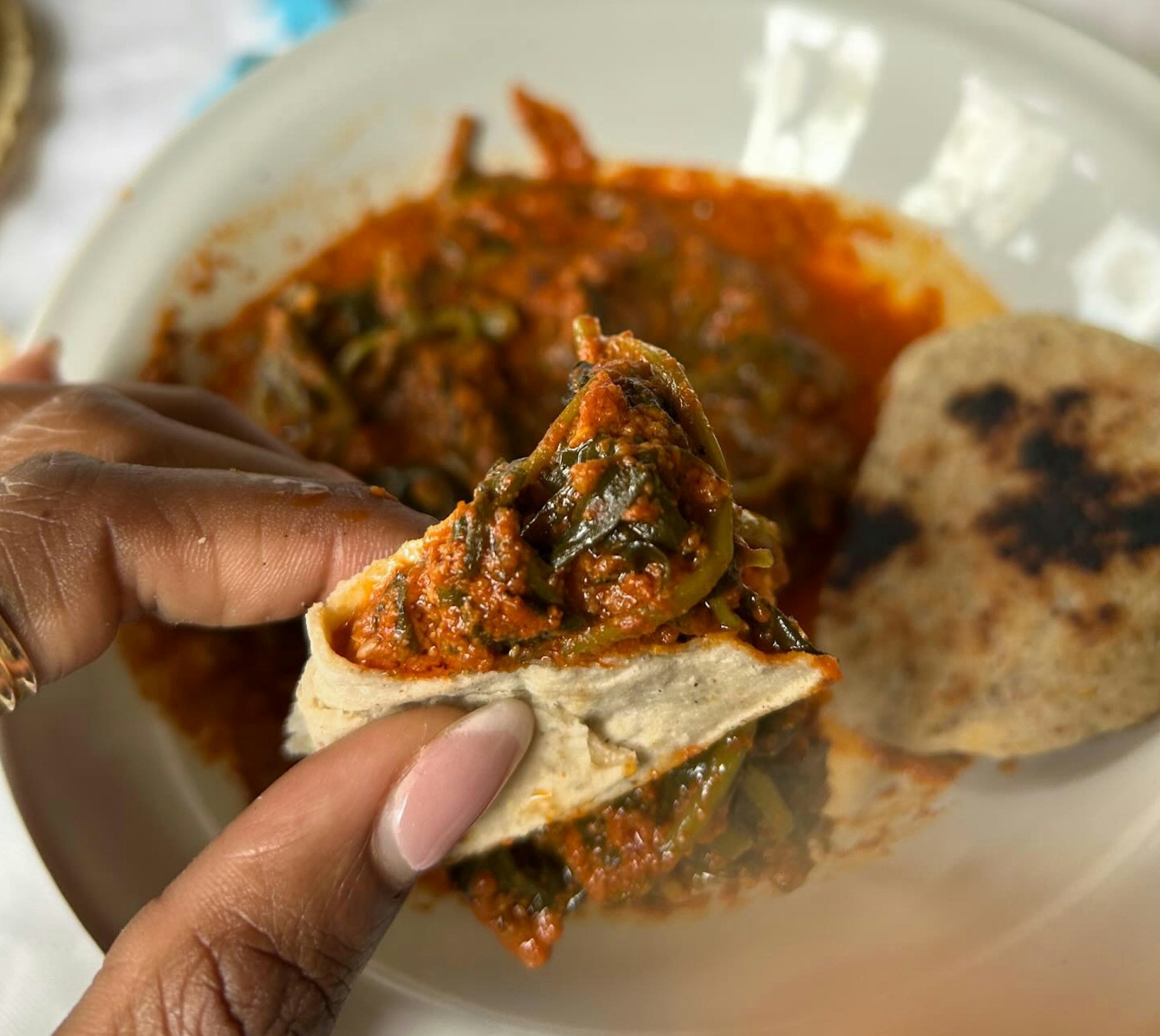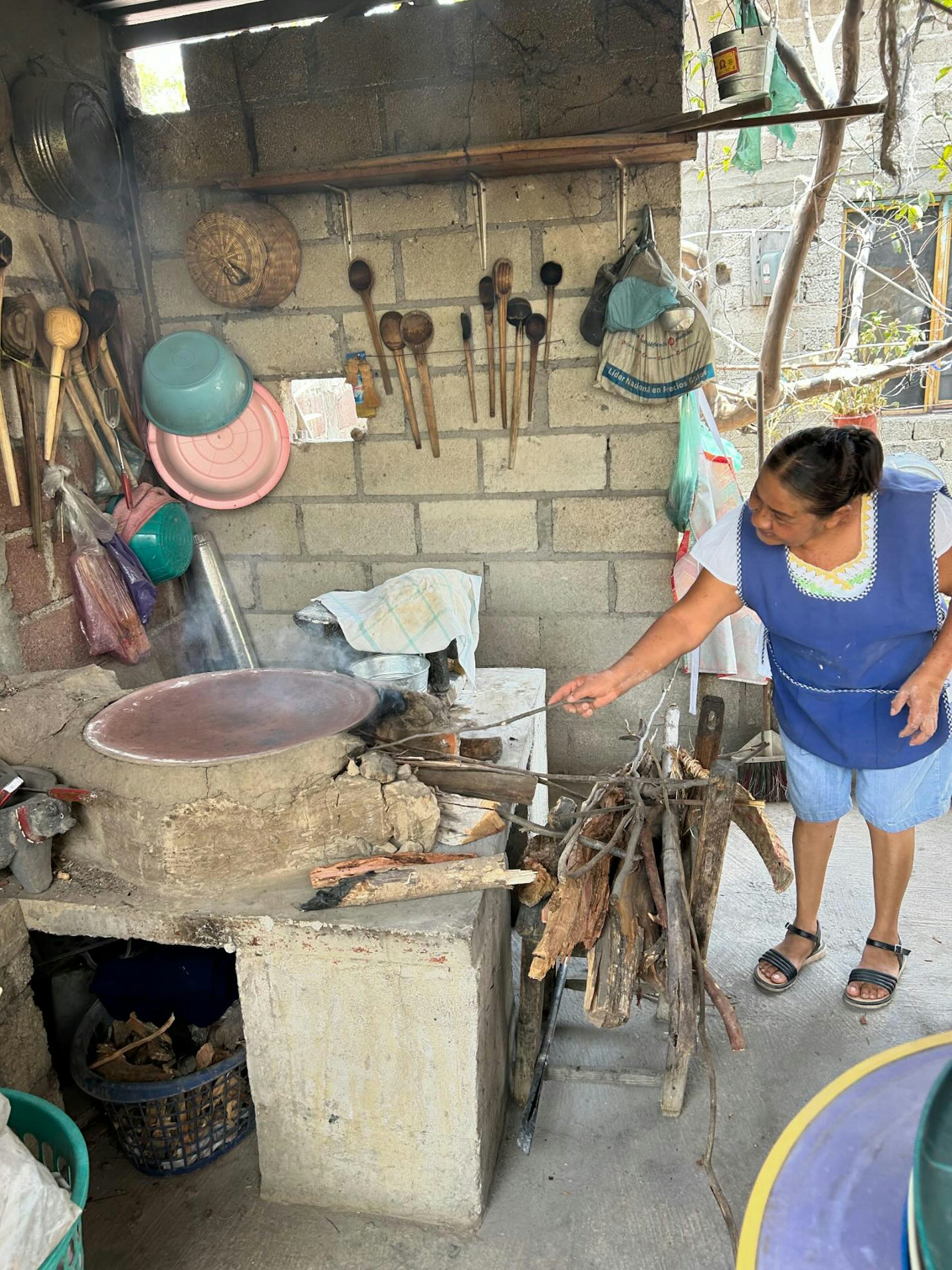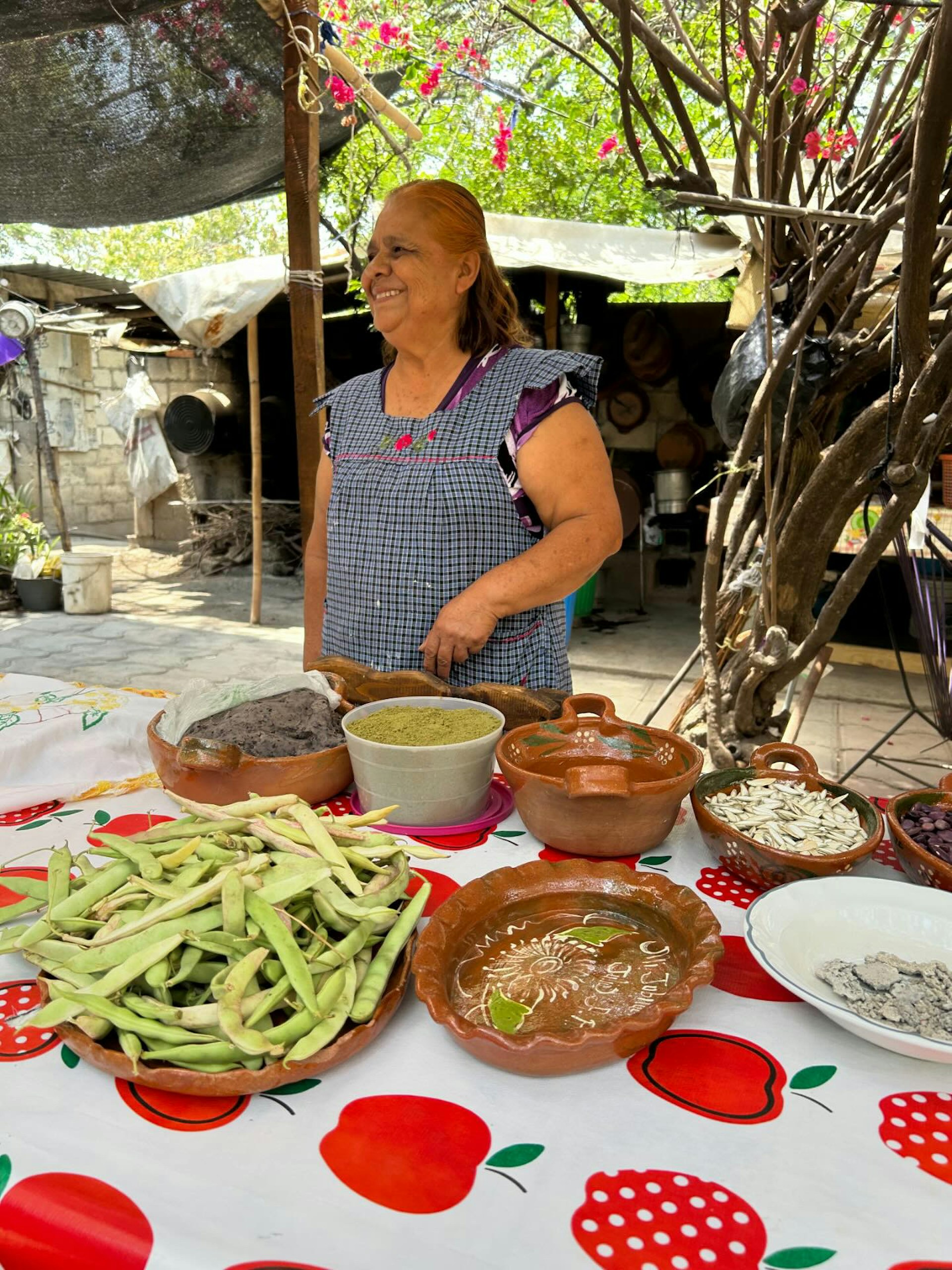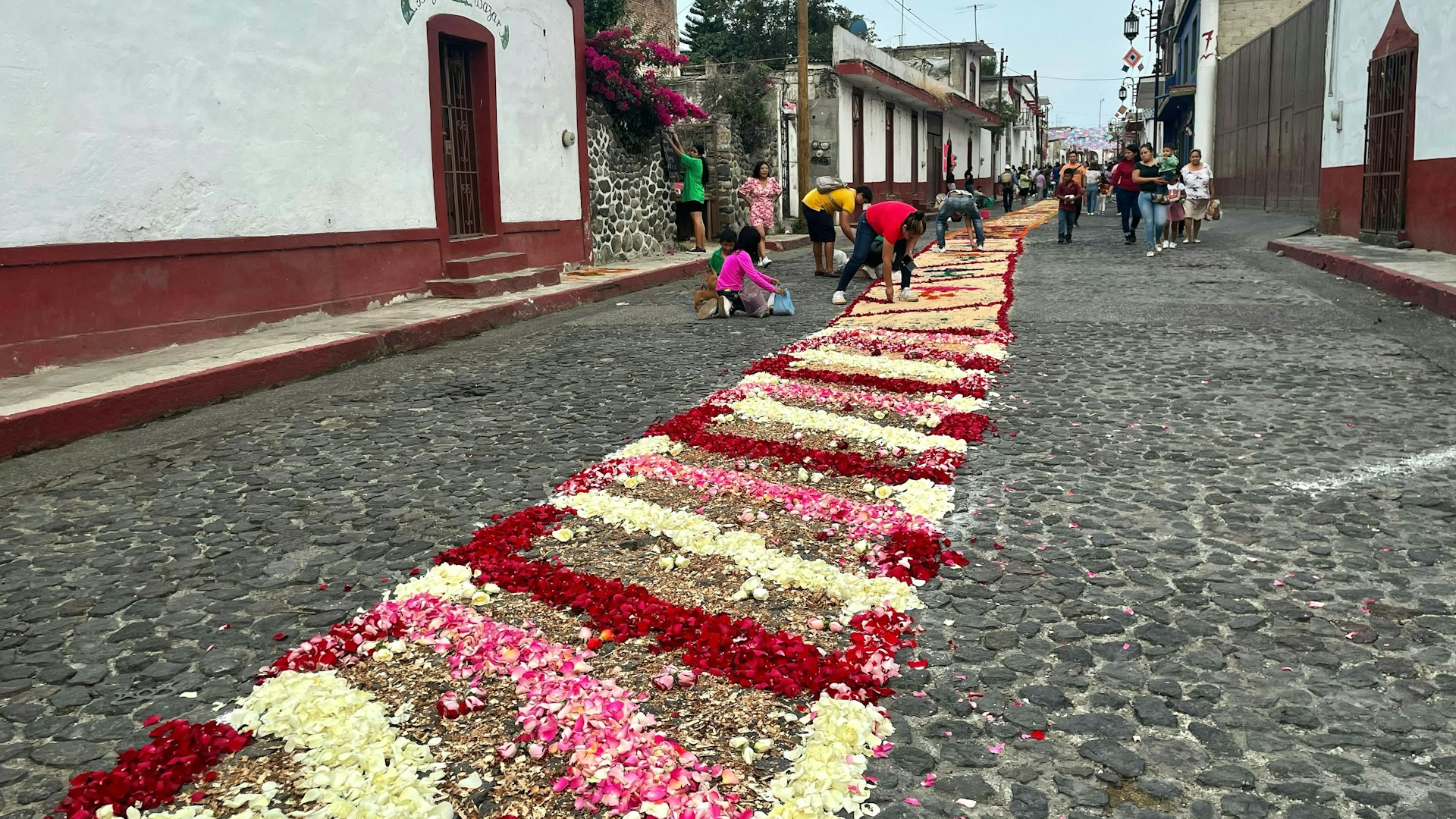February 14, 2025
A Culinary Journey Exploring Mixtec Traditions in Mexico
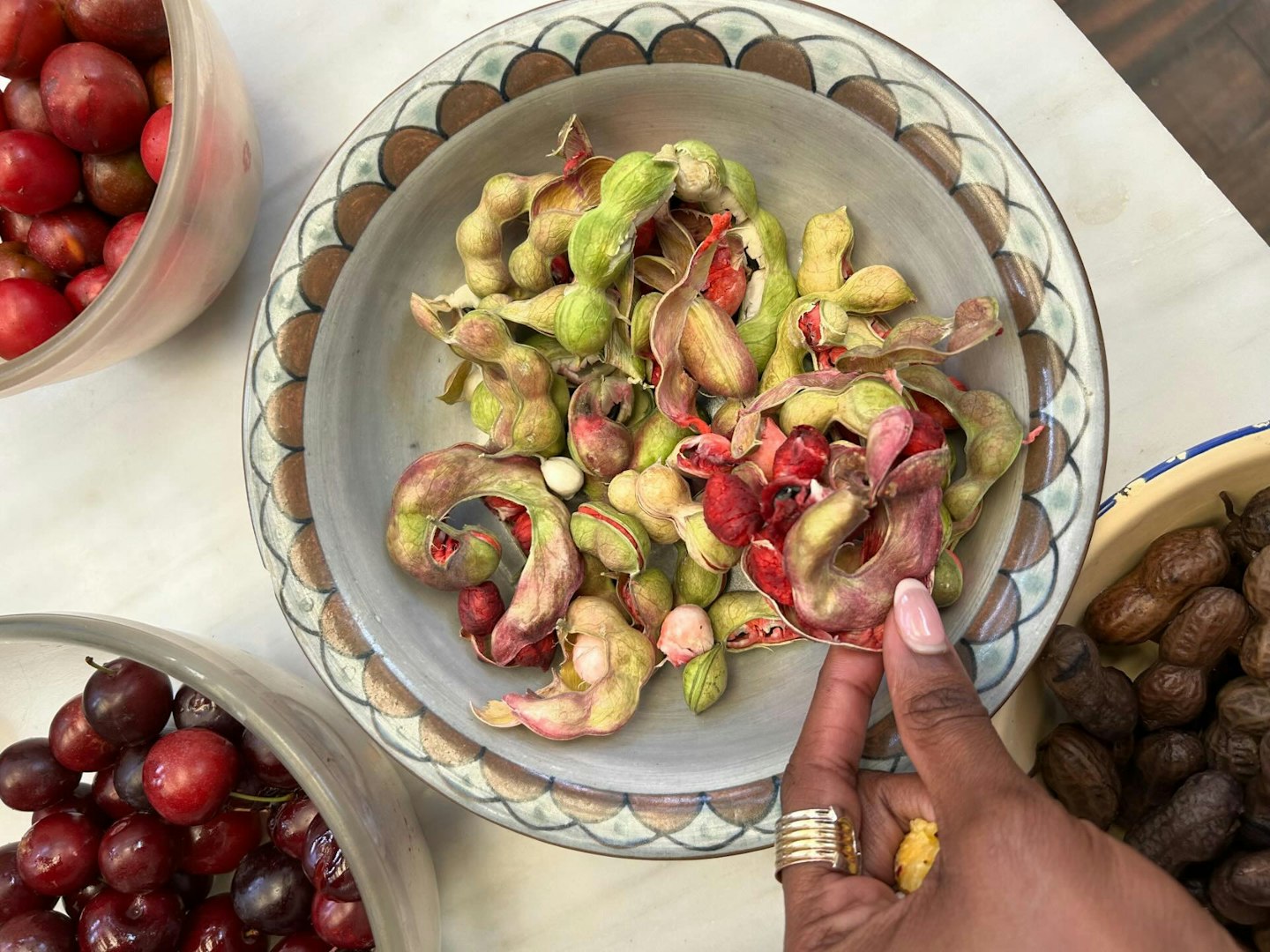
As a culinary enthusiast, cultural preservationist, and herbal artist, I have an insatiable thirst to explore and learn through tradition, culture, and food. I often find myself drawn to the relationships we develop through our palate; how food creates and nurtures our human experiences and interactions. Throughout this journey, I remain committed to honoring and maintaining sustainable, regenerative practices.
Being part of the African diaspora and weaving intricate connections between food, tradition, and culture, I found Paola’s offering through VAWAA’s initiative to be an all-encompassing adventure of passion, presence, ritual, and practice.
I traveled through Mexico in the scorching heat of May, eager to discover the elements that define nourishment and sustenance in this region. Upon arrival, I was warmly welcomed by Paola’s family, a small yet eccentric group of sculptors and artisans. Their deep love for their home and the land infused every aspect of their lives, making my experience with them a whirlwind of art, tradition, and culinary exploration.
Visual artist and cook Paola foraging for ingredients.
Their rustic home, nestled in the lush, marshy landscape of Zacualpan de Amilpas, Morelos, Mexico, exuded warmth and history. Paola’s artistry and her commitment to preserving ancient Mexican heritage were evident in the sculptures displayed throughout their space, crafted by her partner Julio using ancient stoneware to tell a story. (I’ll share more on that later.)
We toured their cozy home and met members of the local community, who all addressed Paola by name and greeted me with kindness.
After settling in, we headed to the local market to gather ingredients for our upcoming days of cooking. The market was alive with vendors selling herbs, grains, and arepas cooked over an open fire, while the sound of musicians filled the air.
At each stop, we encountered familiar faces, community members eager to share their latest harvests with Paola. She emphasized the importance of supporting the local economy, especially for women farmers, who struggle to generate sustainable income during the dry season.
The market brimmed with a beautiful chaos of food, laughter, family, and culture.
The marketplace is a feast for the senses.
After learning about the indigenous vegetation and plants unique to this region of Mexico, we returned to Paola’s home for my first cooking lesson; crafting tamales using boiled yucca root, corn husks, and, to suit my plant-based palate, mushrooms.
Tamales are a traditional Mesoamerican dish made from masa (a dough made from pulverized corn), filled with various ingredients, wrapped in a corn husk (or banana leaf), and steamed. They have been a staple in Mexico and Central America for thousands of years. We prepared an assortment of tamales with nopales, mushrooms, and greens harvested from Paola’s garden. As we worked, we reflected on the brilliance of indigenous culinary techniques, appreciating how plant materials serve as natural vessels to hold food as it cooks—a practice that has been the bedrock of cooking methods for millennia.
I was then introduced to the most exquisite functional sculptural pieces, crafted by the genius mind of Julio. Among them was a steam oven sculpted from basalt—a masterpiece designed with both culture and sustainability in mind.
Basalt, a volcanic rock, has been used in Mesoamerica for centuries to create cookware, tools, and even ritual structures and homes. Cooking our tamales in this traditional stone oven was a profound experience, blending history, artistry, and nourishment into one. That evening, we shared laughter and stories about Zacualpan, deepening our appreciation for the land and its people.
The Art of Mole and the Wisdom of Elders
The next morning, we rose early to meet the matriarchs of the community for a lesson in preparing mole.
Dona Clara, a sweet elder with an inviting warmth, welcomed us into her kitchen, where her daughter, grandchildren, and even a few cats surrounded her, all contributing in their own way.
Mexican mole is a rich, complex sauce that holds a sacred place in Mexican cuisine. Made from a blend of chili peppers, spices, nuts, seeds, and sometimes chocolate, mole varies by region but is often used to top meats like chicken or pork and is traditionally served with tamales, rice, and tortillas. It has an intensely layered flavor, balancing spicy, sweet, smoky, and earthy notes.
The preparation of mole is a slow, sacred process requiring patience and attention to detail. That evening, we began the meticulous prep work for Mole Rojo, a chili and tomato-based sauce, to be served alongside the most delicious homemade tortillas we prepared together.
Mole and tortillas
A Journey Through Traditional Cooking Methods
Day three was a dynamic exploration of traditional stoneware, fire ovens, and, of course, the heart of Zacualpan.
We arrived at a family compound where three generations of Zacualpan natives lived together. Their courtyard was lush with greenery, framed by three wood-fired ovens ready for the day's feast.
The matriarchs of the household shared their cherished family recipe for Mole Verde, a green chili-based mole, while explaining how they used their wood ovens for cooking. The air was filled with the scent of burning charcoal and amber, while delicate bougainvillea petals cascaded around us, offering shade.
As we cooked, we listened to their stories; tales of abundance, resilience, and tradition. They reminisced about a time when their harvests were plentiful enough to feed all of Mexico. We prepared the evening meal together, savoring not just the food but the deep history woven into every dish.
Cooking with the matriarchs of Zacualpan
Zacualpan de Amilpas: A Hidden Gem
Zacualpan de Amilpas is a picturesque town located in the northeastern part of Morelos, Mexico. The region’s flora includes low deciduous forests, with trees and plants such as jacaranda, tabachín del monte, casahuate, ceiba, copal, zomplantle, and bougainvillea.
The name "Zacualpan" comes from the Nahuatl words "tzacual-li" (meaning "covered thing") and "pan" (meaning "on top of"), translating to "atop that which is covered." "Amilpas" refers to the 25 human settlements that were once controlled by Moctezuma Ilhuicamina from his palace in Huaxtepec (now Oaxtepec).
Streets of Zacualpan.
My time in Zacualpan was enriching and deeply meaningful in my quest to learn about the traditional practices of Mesoamerican indigenous peoples. The culinary landscape of this region offers a genuine taste of cultural richness, inviting visitors to savor flavors passed down through generations.
Chef Paola’s love and dedication to sharing the traditional secrets of Zacualpan’s people were admirable; an experience I will cherish forever.
Written by Wilnise François
Follow Wilnise on Instagram
Learn more about Paola and her mini-apprenticeship here.
Explore all our curated artist apprenticeships worldwide and book one today.
Subscribe to our weekly newsletter to stay inspired with new artist stories and creative apprenticeships.
